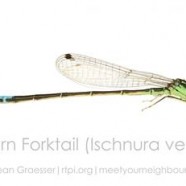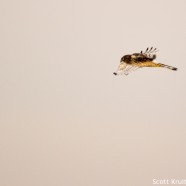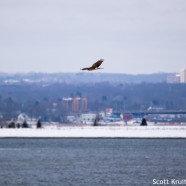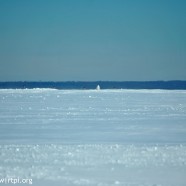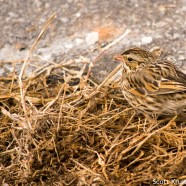Eastern Forktails
One of the first spring damselflies to be seen, and one of our most abundant: The Eastern Forktail (Ischnura verticalis). As you can see the males and females can show a variety of coloration. Sean loves seeing fields and areas with water just filled with these jewels of all different colors. Photographed by RTPI Affiliate Sean Graesser for the Meet Your Neighbours global biodiversity project in Connecticut for the Roger Tory Peterson Institute of Natural History.
Read MoreStarving Raptors
These photos are of a Northern Harrier on the hunt, swooping over grasslands and fields in search of small mammal prey. While I took these shots mere days ago this type of predatory behavior in itself has been a bit more scarce than usual this winter. Birds of prey, including owls and various hawks, have had a very difficult time finding food during the historically cold and very snowy conditions. Needing more calories than ever to survive in this weather they have had very little to find, and the New York State Department of Environmental Conservation reports there has been a high mortality...
Read MoreNorthern Harrier in the Snow and Sky
I recently photographed this Northern Harrier flying through some heavy snow. These are the most typical sort of views you will have of the species while surveying for them in the field. The long and thin raptor can often be easily identified swooping low over the land, watching for prey, by the big white patch at the base of the tail. They can be seen in grasslands, farm fields, and coastal areas. If you are one of our friends in Chautuauqa County please remember that we at the Roger Tory Peterson Institute of Natural History are assisting the New York State Department of Environmental...
Read MoreCan You Spot the Snowy?
Can you spot the Snowy Owl (Bubo scandiacus) in this photo? The owl is relatively noticeable sitting along the edge of the field; however, they aren’t always very easy to see. This individual in particular is very white, blending in with the mounds of drifted snow nearby. It often takes a hard look to see these perfectly camouflaged predators sitting in a field or along a beach. Makes you wonder how many more Snowy Owls are in the area that just haven’t been noticed yet? If you decide to bundle up and search for some visiting species, remember to log your sightings in eBird and...
Read MoreSavannah Sparrow Up Close
This Savannah Sparrow would certainly rather be in the grasslands and farm fields than stuck to the pavement. Unfortunately for the bird at the moment, and often for the species in the winter, those favored habitats are covered in a very deep layer of snow and ice. Instead it feeds on any exposed seeds it can find in these grasses, just like other birds I have photographed and shown you lately. It is not an easy life but it may be easier and safer overall than migrating far to the south and having to return in a couple of months. Scott Kruitbosch Conservation & Outreach...
Read More



